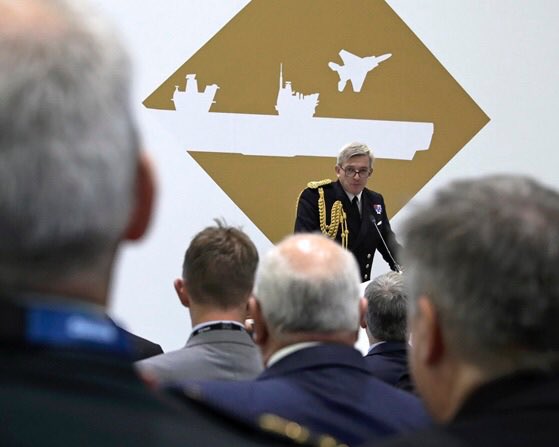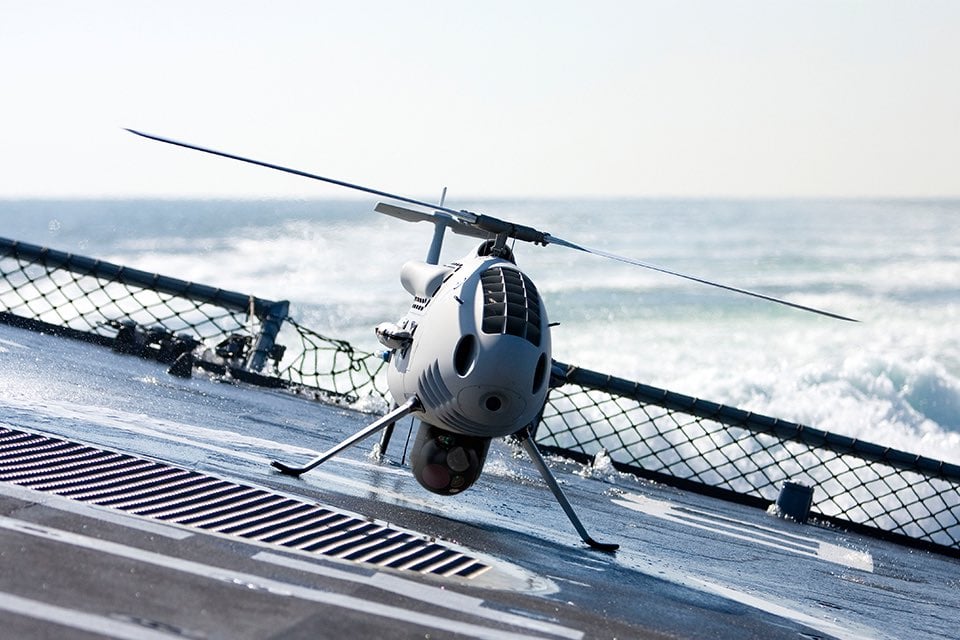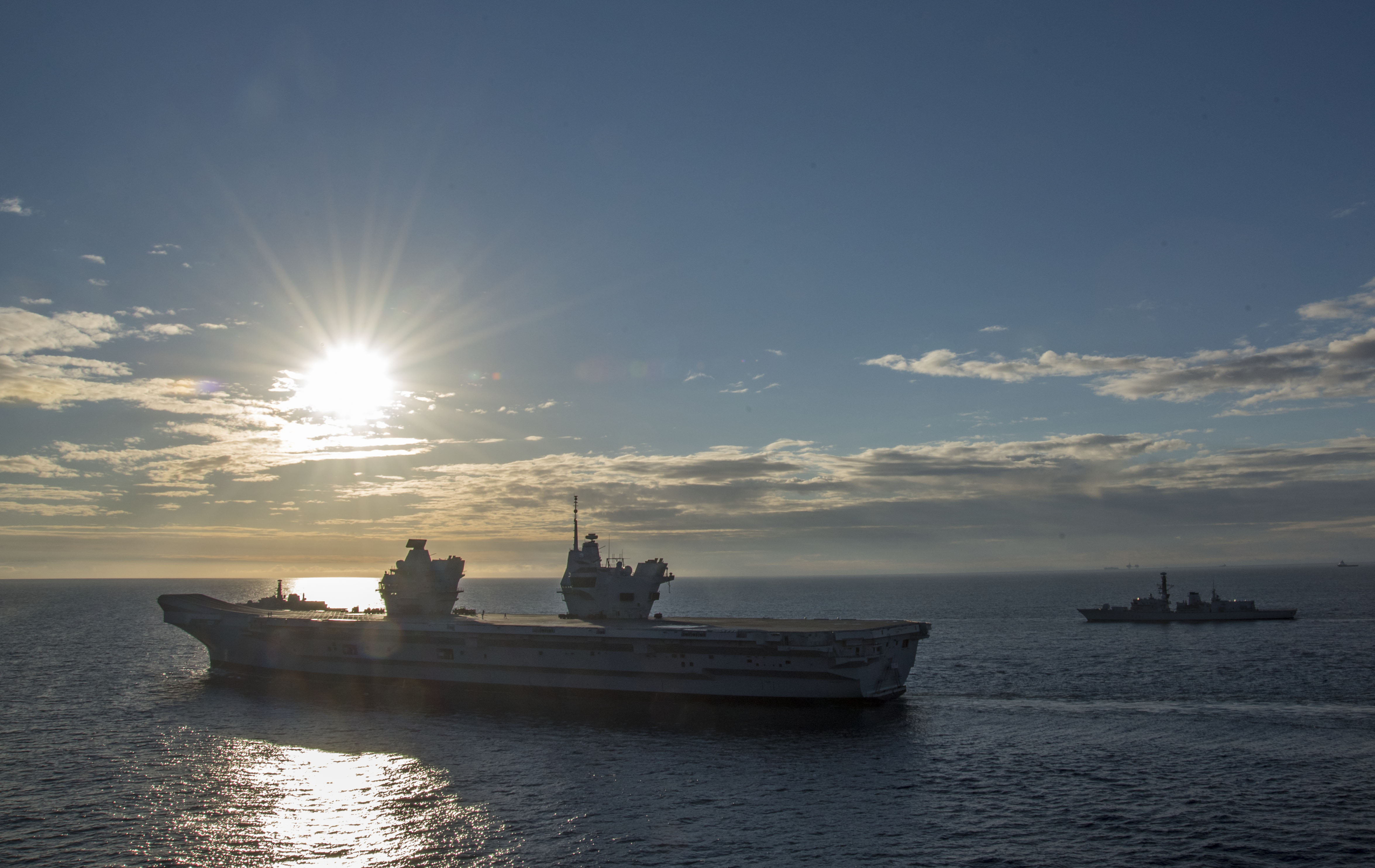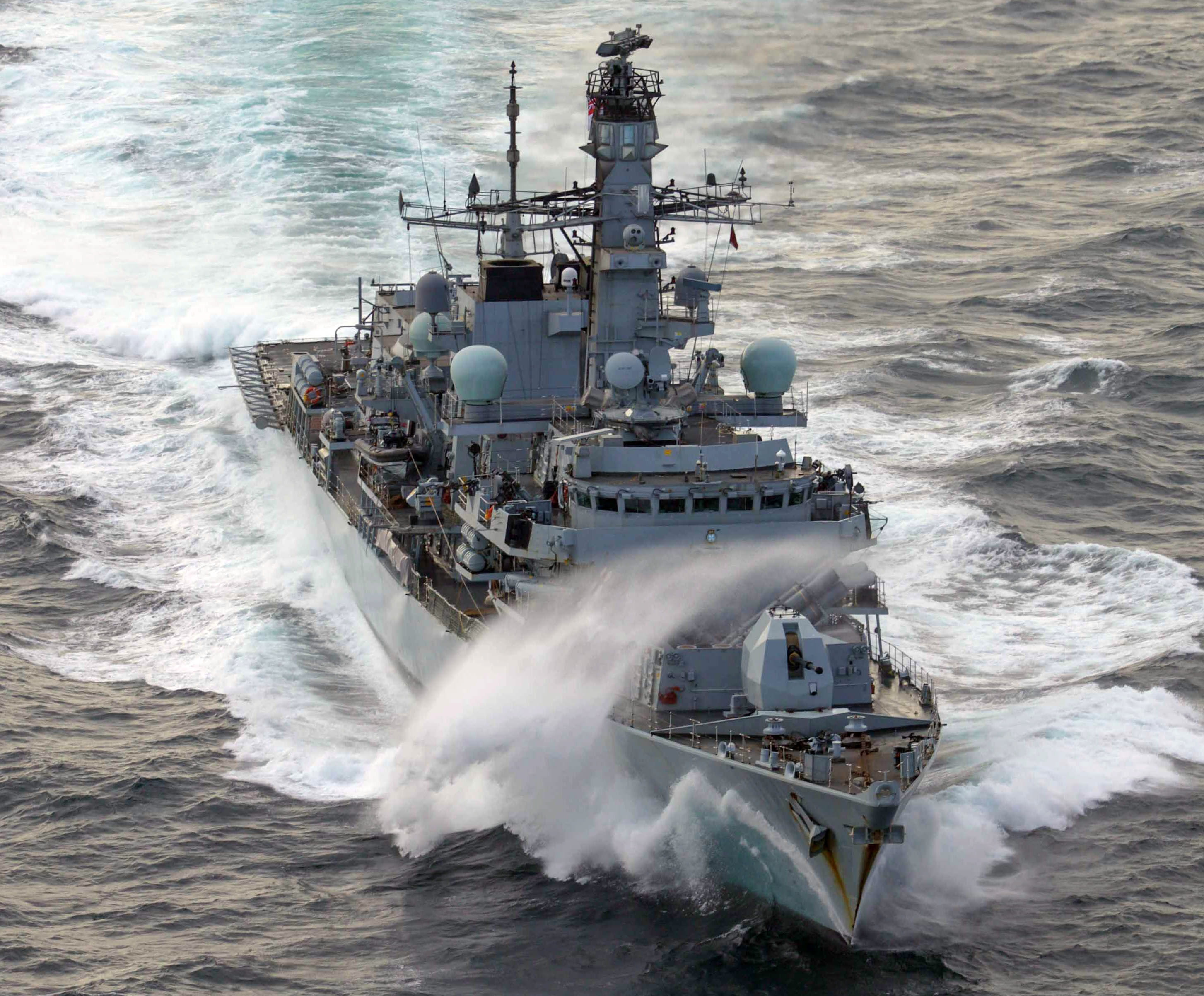
LONDON — Britain’s naval chief has unveiled plans to deploy unmanned systems for routine mine hunting missions as part of a wider Royal Navy vision that includes the rapid adoption of autonomous air systems, open architectures and artificial intelligence.
The Royal Navy’s future Mine Countermeasures and Hydrographic Capability (MHC) program is being accelerated as part of a determined focus on science and technology within the service, while an unmanned rotary-wing aircraft is expected to be demonstrated onboard a frigate next year.
Announcing his far-reaching technology blueprint, First Sea Lord and Chief of the Naval Staff Adm. Sir Philip Jones told an audience at the DSEI exhibition in London on Tuesday: “From autonomous systems operating in squads to artificial intelligence-assisted decision making, what we’ve glimpsed over the past two years has the potential to entirely change our approach to operations.

“This requires big decisions with far reaching consequences. Are we, for instance, prepared to remove existing platforms from service in order to create the financial and manpower headroom to introduce new systems which, in time, could deliver truly transformative advances in capability?
“Change on this scale can be disconcerting, but if we hesitate, then we risk falling further behind.”
At DSEI 2015, then Adm. Sir George Zambellas, said the navy must exploit rapid developments in autonomy and robotics, 3D printing, novel weaponry and the “power of data” to bring new capabilities into service as quickly as possible.
In a keynote speech at this year’s event, his successor outlined some of the weapon systems, sensors and other technologies that senior officers hope will keep the RN “at the forefront of capability in the decades to come”.

Entitled ‘Courage and skill: next steps in the Royal Navy’s technology journey’, Jones’ address hailed Exercise Unmanned Warrior in 2016 as an example of how the service had collaborated with industry to investigate potential breakthroughs in unmanned vehicle technology.
“We broke records and pushed the boundaries of innovation further than ever before”, he said.
“Six months later we returned for Exercise Information Warrior, doing the same for cyber, ultra-modern communications, information exploitation and artificial intelligence.
“In both cases, we knew that industry was far ahead of the military in exploiting the latest developments, but we were surprised by just how far.”
Jones singled out IBM’s Aspera bandwidth acceleration technology, which slashed the time for chest x-rays to pass through a handheld SATCOM terminal from half an hour to under five minutes.
“The benefits this could bring to medical teams deployed at sea with a carrier strike group or 3 Commando Brigade ashore, or indeed with any force deployed at range, are obvious. Time and again we saw examples like this of commercially available technologies that could have wide application across the armed forces.
“And of all the many things we learned from these exercises, the one lesson which stood out more than any other was the need to be faster and more agile in how we develop and introduce new capabilities into service.”

Jones also cited a lightweight deployable IT system developed by design engineering consultancy Antillion, in partnership with the Defence Science and Technology Laboratory (an agency of the Ministry of Defence) and the RN’s own MarWorks innovation team, which takes just minutes to set up.
“We put it to use in Information Warrior and, liking what we saw, we’ve decided to introduce it in place of 3 Commando Brigade’s current IT straight away.”
The navy is now shifting the experimentation/trials process to the operational arena, deploying three unmanned underwater vehicles from the survey ship HMS Enterprise during its stint in the Mediterranean as command platform for Standing NATO Mine Countermeasures Group 2.
In his address, Jones announced that the Royal Navy is planning to speed up its MHC program by delivering an unmanned capability “for routine mine countermeasure tasks in U.K. waters in two years’ time.
“Similarly, from what we’ve seen over the past two years, we know it should be perfectly possible for the [proposed] Type 31e frigate to operate a vertical lift unmanned air system alongside or perhaps even in place of a manned helicopter from the moment the first ship enters service from 2023.
“And as a precursor to this, we plan to work with our partners in the aerospace industry to demonstrate such a capability on a Type 23 frigate next year.”
Criticising the slow pace of software updates, which sometimes “take months to introduce [and] simply aren’t fast enough to match our ambition”, the admiral called for open architectures to be introduced into service more quickly and far more widely.
Initially, the frigate HMS Westminster will be retrofitted with an open architecture shared infrastructure system. “If successful, we will roll this system out to the rest of the Type 23s by 2020, and the remainder of the fleet thereafter”, Jones said.
“And because this will form the basis for the integration of all weapon systems, engineering sensors and off-board logistics in the future, we have specified that the new Type 31e general purpose frigate should be designed with open architecture from the outset.

“What this means in practice is that the Type 31e will feature different app based tools which can access the ship’s data. These will be operated by a series of touchscreen displays, Apple Siri-style voice controlled assistants and perhaps even augmented reality technology.
“This is not a gimmick or a fad. As modern warfare becomes ever faster, and ever more data driven, our greatest asset will be the ability to cut through the deluge of information to think and act decisively.”
Highlighting the crucial importance of artificial intelligence to future naval capability, he said that during Ex Information Warrior a number of experts were given over a terabyte’s worth of information, including radar and sonar data, as well as access to an open architecture infrastructure with standardized data formats and RN defined interfaces.
“Over three days they were able to use this information to develop astonishing solutions to real problems at extraordinary speed. We proved, for example, that a drugs smuggler is no longer a bobbing needle in an oceanic haystack but has an identifiable algorithmic fingerprint. In the engineering world, we can predict, and therefore prevent, component failures.”
Citing experimental projects that could ultimately produce drones that dissolve on demand or algae electric propulsion systems, Jones said the RN needed to play a much more active role in encouraging young people towards careers in science and technology.
You can read my full speech – ‘Courage and skill: the next steps in the Royal Navy’s technology journey’ – https://t.co/N6hMtQteKJ pic.twitter.com/Wxci8pHqIQ
— First Sea Lord (@AdmPhilipJones) September 12, 2017
This process has already begun, with an initial tranche of 140 students enrolling at a new college opening this week in Portsmouth close to one of the RN’s main south coast bases.
“The Royal Navy’s future success is indivisible from the U.K.’s strength in the design and manufacture of advanced systems, and the associated research and development. It’s in our interests to help support the national requirement for STEM skills, as well as our own.”
A degree of risk was inevitable as the high-tech transformation gathers pace, Adm Jones warned, but “nothing in innovation or warfare has ever been achieved by playing it safe; and as I see it, the biggest risk of all is carrying on as we are.
“International security is deteriorating and demands on the navy are growing, public spending remains tight, why would we not adopt new solutions if they can help us square the circle?
“Ultimately, it’s about courage as an organization. The Royal Navy has always succeeded by being bold. We’ve seen what the technology can do. Now we must take a brave step forward to embrace the opportunity before us, and I intend to lead the Royal Navy to do just that.”





